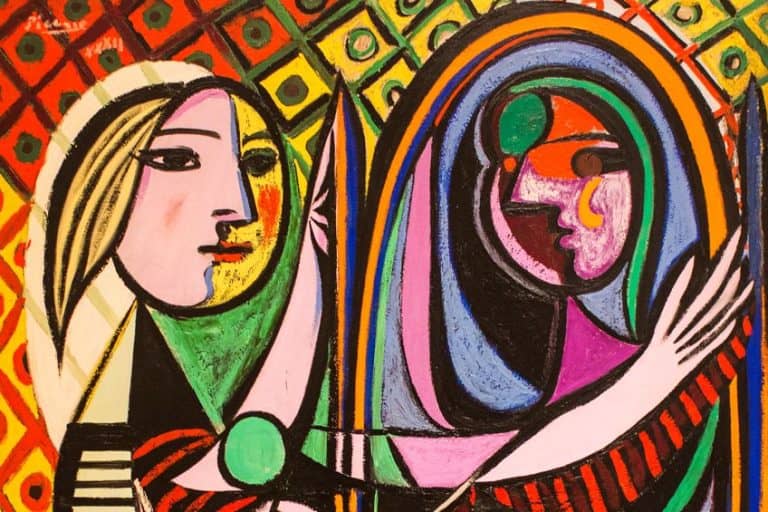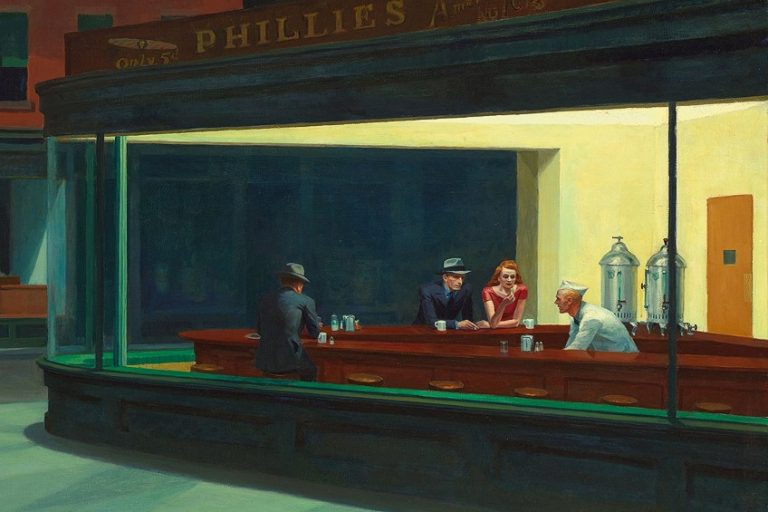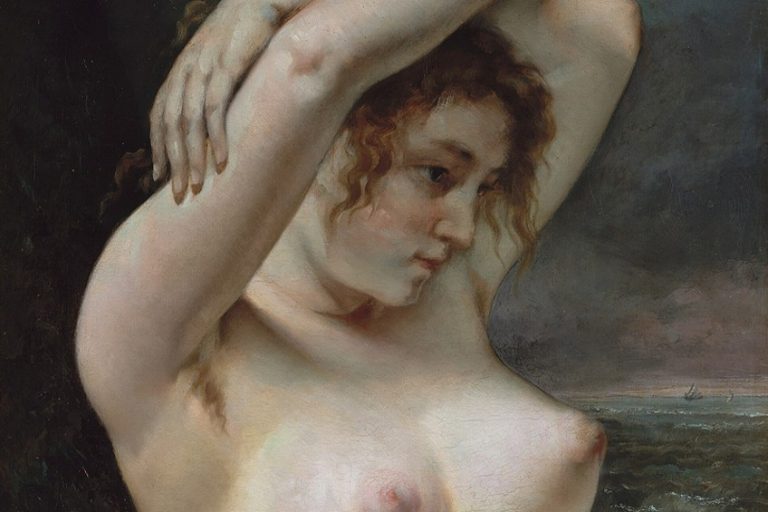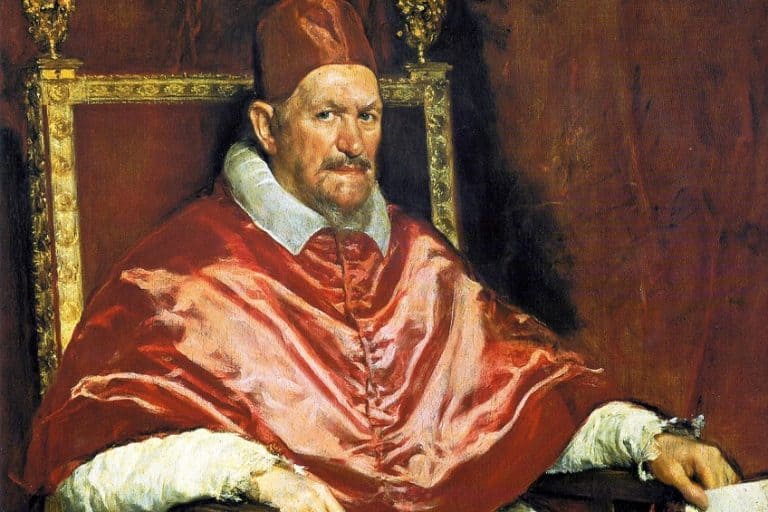“Le Portugais” by Georges Braque – Cubism Unveiled
Le Portugais, painted by Georges Braque in 1911, stands as a seminal work in the development of Cubism, a revolutionary art movement co-founded by Braque and Pablo Picasso. This oil on canvas piece exemplifies Analytical Cubism through its fragmented depiction of a Portuguese musician. Braque deconstructs the subject into geometric forms and muted tones, emphasizing the complex interplay of light and shadow. The inclusion of stenciled letters and numbers adds a layer of abstraction, challenging traditional perspectives on representation. Le Portugais is a testament to Braque’s innovative approach, marking a pivotal moment in 20th-century art by blurring the boundaries between reality and perception.
Key Takeaways
- Le Portugais is a significant work of Analytical Cubism by Georges Braque.
- The painting features a musician and incorporates incomplete words and numbers.
- Le Portugais is displayed in the Basel Kunstmuseum.
Origins and Context of Le Portugais
| Artist | Georges Braque (1882 – 1963) |
| Date Created | 1911 |
| Medium | Oil on canvas |
| Genre | Abstract |
| Period/Movement | Analytical Cubism |
| Dimensions (cm) | 116.8 x 81 |
| Series/Versions | None |
| Where Is It Housed? | Kunstmuseum Basel, Basel, Switzerland |
| What It Is Worth | Estimated at $60-80 million (value based on recent market trends and historical significance) |
Georges Braque’s Le Portugais is a standout piece in the world of early 20th-century art. Completed in 1911, this oil on canvas painting exemplifies the Analytical Cubism movement with its fragmented, geometric style. The painting captures a musician surrounded by incomplete inscriptions, creating an intriguing blend of abstraction and representation.

Braque introduced letters and numbers into the composition, which added layers of meaning and complexity. This approach was not merely decorative but aimed to challenge the observer to look beyond the literal. The stenciled letters “D BAL” and Roman numerals seen in the painting break traditional conventions of portraiture and still life. Le Portugais is currently housed in the Basel Kunstmuseum, drawing art enthusiasts and scholars alike. It remains a pivotal work that underscores Braque’s innovative contributions to Cubism and modern art.
Inception in Cubism
Cubism was an art movement that began in the early 20th century. Georges Braque, alongside Pablo Picasso, pioneered this style. Le Portugais or The Emigrant is a key piece from the Analytical Cubism phase. Cubism fragmented objects into geometric shapes, offering a new perspective on how form and space interacted.
Braque’s Le Portugais exemplifies this approach. It features a figure and a guitar, fragmented into intersecting planes.
The use of letters and numbers, stenciled on the canvas, marked a departure from traditional representation, focusing instead on abstract interpretation. This painting uses muted colors and detailed structures, reflecting the era’s modernist tendencies.
The Role of Georges Braque
Georges Braque played a crucial role in Cubism’s development. Born in France in 1882, he initially experimented with Fauvism before co-founding Cubism. His collaboration with Picasso in the years leading up to 1911 shaped his artistic approach.

Le Portugais demonstrates Braque’s innovative use of oil on canvas. He incorporated his interests in music and everyday objects into his art. The stenciled letters “D BAL” and Roman numerals in the painting add a layer of abstraction. These elements draw the viewer’s attention to the painting’s structure rather than its subject. Braque aimed to challenge viewers to see beyond the surface, making Le Portugais a cornerstone of modern art.
His techniques influenced future movements and solidified his place in art history.
Artistic Elements of Le Portugais
Le Portugais by Georges Braque, created in 1911, is a prime example of Analytical Cubism. This artwork uses fragmented shapes and geometric forms, while playing with color and composition in a detailed, thought-provoking manner.
Analytical Cubism Techniques
Braque’s Le Portugais embodies techniques typical of Analytical Cubism. The painting showcases fragmented and abstract forms, breaking down the subject into geometric shapes and planes. This approach reveals different perspectives in one view. Braque incorporates stenciled letters and numbers, contributing to the sense of modernity and abstraction. The detail in these elements enhances the complexity, as they float within the geometric configuration, linking to a broader visual narrative.

Color and Composition
The color palette in Le Portugais is subdued, relying on muted browns, grays, and blacks. This choice emphasizes form over color, a hallmark of Analytical Cubism. Braque expertly balances these shades to create depth and dimension. The composition is dense and layered, with overlapping shapes that make the viewer’s eye move across the canvas.
The inclusion of recognizable silhouettes, such as a figure and a guitar-like shape, adds to the painting’s interpretative depth.
Dimensions and Medium
Le Portugais measures 116.8 by 81 cm, a size that allows for detailed, intricate work without overwhelming the viewer. The painting is done in oil on canvas, a medium that Braque manipulates skillfully to enhance texture and layering. The choice of oil paints enables smooth transitions between shades and meticulous detail work, which are crucial for the painting’s fragmented design. The canvas’s dimensions provide a balanced space for extensive use of geometric forms and stenciled elements.
Significance and Interpretations
Le Portugais, created by Georges Braque in 1911, stands out due to its unique symbols, cultural influence, and the varied interpretations it has evoked among art critics. This section delves into the symbols and metaphors Braque includes, the cultural and artistic impact of the piece, and contemporary reviews when it first appeared.
Symbols and Metaphors
Braque’s painting integrates letters and numbers, such as “D BAL” and Roman numerals, which are not merely decorative but symbolic. These elements force the observer to engage with the painting, deciphering its meaning. The blurred figuration of the silhouette and guitar suggests a deeper meaning beyond the literal.

The boundary-place concept in Braque’s work refers to the intersections where different dimensions meet. This intersection makes the piece complex and layered, inviting multiple interpretations. These symbols challenge, invite engagement, and suggest artists’ deeper intentions.
Cultural and Artistic Impact
Le Portugais marks a critical point in the development of Cubism. By incorporating letters and numbers, Braque transformed figurative painting into something that invites viewers to see beyond the surface. The inclusion of everyday elements in the art destabilized traditional boundaries of visual arts. The painting’s cultural impact lies in its departure from representational art. It pushed the boundaries of how art could be interpreted, breaking from conventional perspectives.
Braque’s work influenced many artists, driving the Cubist movement further and encouraging the integration of text and symbols in visual arts.
Contemporary Reviews
During its initial presentation, contemporary reviews of Le Portugais were mixed. Some critics found Braque’s approach revolutionary, while others struggled with the evocative boundary-place concept. Reviewers noted the challenge in deciphering the complex interplay of symbols and blurred figures.

Many observers weren’t ready for such a radical shift in artistic representation, leading to a range of reactions. Some hailed it as a breakthrough in modern art, while others believed it distorted traditional values. The varied responses highlighted the significant shift Braque was advocating for in the art scene.
The Journey of Le Portugais
Georges Braque’s Le Portugais is a cornerstone of the Analytical Cubism movement. Its journey through history involves notable ownership and multiple exhibitions across the globe.
Provenance and Ownership
Le Portugais has passed through notable hands since its creation. Originally part of Braque’s collection, the painting gained attention due to its unique cubist style. The Kunstmuseum Basel, a renowned museum in Switzerland, is among the institutions that have housed Le Portugais. Early collectors recognized the painting’s importance, leading to its acquisition by significant private collectors and eventually finding a place in prominent public collections.
This journey reflects the high regard for Braque’s work in the art market.
Exhibition History
Le Portugais has been exhibited in several major exhibitions worldwide, underscoring its artistic and historic importance. Early on, it was featured in exhibitions that showcased the emerging Cubist movement. The Kunstmuseum Basel, known for its extensive collection of modern art, has notably exhibited the work, drawing in audiences from across Switzerland and beyond. Such exhibitions have contributed to the painting’s fame and the widespread appreciation of Braque’s innovative approach to capturing form and space. This exposure has cemented Le Portugais as a pivotal work in the narrative of modern art.

Le Portugais remains a cornerstone of Cubist art, exemplifying the radical departure from traditional representation that defined early 20th-century modernism. Through its fragmented forms and subdued palette, the painting invites viewers to engage with the complexities of perception and interpretation. Braque’s innovative use of text and abstraction not only challenges the boundaries of visual art but also paves the way for future artistic explorations. As an emblem of Analytical Cubism, Le Portugais continues to influence and inspire, affirming Braque’s enduring legacy in the annals of art history.
Frequently Asked Questions
What Does Le Portugais by Georges Braque Symbolize?
Le Portugais symbolizes the complexities of modern life through fragmented forms and abstracted shapes. The inclusion of stenciled letters and numbers adds a layer of meaning, suggesting the influence of written language and signs in visual art.
How Did Le Portugais Contribute to the Development of Cubism?
Le Portugais played a significant role in the evolution of Cubism. Its use of geometric shapes and fragmented forms exemplified Analytical Cubism, moving the style away from traditional representation to focus on multiple perspectives within a single plane.
What Techniques Did Georges Braque Employ in Creating Le Portugais?
Braque used oil on canvas for Le Portugais. He incorporated stenciled letters and numbers, which was innovative at the time. The painting’s geometric shapes and overlapping planes are characteristic of Analytical Cubism, emphasizing form and structure over detailed representation.
In What Ways Does Le Portugais by Braque Differ from His Other Works?
Le Portugais stands out with its use of stenciled letters and numbers, which Braque had started to experiment with around this time. While earlier works focused more on still lifes and landscapes, this painting pushed the boundaries with abstract, fragmented forms, leading to a deeper exploration of Cubism.
Isabella studied at the University of Cape Town in South Africa and graduated with a Bachelor of Arts majoring in English Literature & Language and Psychology. Throughout her undergraduate years, she took Art History as an additional subject and absolutely loved it. Building on from her art history knowledge that began in high school, art has always been a particular area of fascination for her. From learning about artworks previously unknown to her, or sharpening her existing understanding of specific works, the ability to continue learning within this interesting sphere excites her greatly.
Her focal points of interest in art history encompass profiling specific artists and art movements, as it is these areas where she is able to really dig deep into the rich narrative of the art world. Additionally, she particularly enjoys exploring the different artistic styles of the 20th century, as well as the important impact that female artists have had on the development of art history.
Learn more about Isabella Meyer and the Art in Context Team.
Cite this Article
Isabella, Meyer, ““Le Portugais” by Georges Braque – Cubism Unveiled.” Art in Context. July 9, 2024. URL: https://artincontext.org/le-portugais-by-georges-braque/
Meyer, I. (2024, 9 July). “Le Portugais” by Georges Braque – Cubism Unveiled. Art in Context. https://artincontext.org/le-portugais-by-georges-braque/
Meyer, Isabella. ““Le Portugais” by Georges Braque – Cubism Unveiled.” Art in Context, July 9, 2024. https://artincontext.org/le-portugais-by-georges-braque/.











